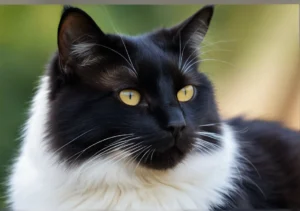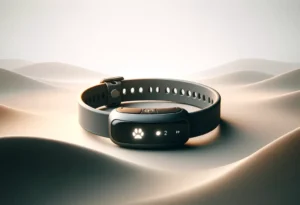Uneven cat whiskers can sometimes be a cause for concern for pet owners. But fear not, there are perfectly logical reasons behind this seemingly quirky phenomenon. Let’s take a closer look at why your cat’s whiskers may be uneven.
Whiskers 101: Understanding the Basics
Whiskers aren’t just cute facial features on your feline friend – they serve a vital purpose. These specialized hairs, technically known as vibrissae, are much more than just accessories; they’re crucial sensory tools for your cat. Whiskers are rooted deep in your cat’s face, connecting to sensitive nerve endings that can detect even the slightest changes in their surroundings.
Imagine whiskers as your cat’s built-in radar system. These incredible hairs help your furry friend gauge distances, navigate in the dark, and even communicate with other cats. When your cat is exploring tight spaces, hunting for prey, or just trying to squeeze into a cozy spot, their whiskers act like a guidance system, providing valuable information about their environment.
Shedding Light on Uneven Whiskers
If you’ve noticed that your cat’s whiskers are uneven, don’t panic – it’s more common than you think. One of the primary reasons for uneven whiskers is natural shedding. Just like any other hair on your cat’s body, whiskers go through a growth cycle that includes shedding and regrowth. As older whiskers fall out naturally, new ones take their place, which can result in uneven lengths.
Another reason for uneven whiskers may be accidental trimming. Cats are curious creatures who love to explore their surroundings, and sometimes they might accidentally trim their own whiskers. This can happen if your cat gets too close to a hot surface, sharp object, or even during playtime with other pets.
It’s essential to allow your cat’s whiskers to grow back naturally, as they play a crucial role in your cat’s sensory experience. Avoid trimming your cat’s whiskers deliberately, as this can disorient them and affect their ability to navigate and interact with their environment effectively. So, embrace your cat’s unique whisker pattern as a part of their individual charm and let them roam freely with their whiskers intact!
Genetics at Play
Curious why your cat’s whiskers are uneven? Well, genetics could be the culprit. Just like humans inherit traits from their parents, cats can inherit certain features too. Some cats may have whiskers that grow at different rates or in varying lengths due to their genetic makeup. So, if you’ve noticed your feline friend sporting uneven whiskers, blame it on the genes!
The Role of Stress
Stress isn’t just a human problem – it can affect our furry friends too. High levels of stress or anxiety in cats can actually impact the growth and appearance of their whiskers. When a cat is stressed, their body can go into survival mode, affecting things like whisker growth. So, if your cat’s whiskers seem out of whack, it might be worth investigating if they’re feeling anxious or uneasy.
Additional Unique Insight: Did you know that whiskers are highly sensitive and help cats navigate their surroundings? Uneven whiskers could potentially indicate your cat is struggling to cope with changes or stress in their environment.
Nutritional Factors
Are your cat’s whiskers looking a bit lopsided? It might be time to take a closer look at their diet. A lack of essential nutrients, like fatty acids, can result in brittle whiskers that break easily, causing uneven growth. Make sure your feline friend is getting a balanced diet with adequate amounts of Omega-3 and Omega-6 fatty acids, which are crucial for healthy whiskers.
Moreover, protein deficiency can also lead to whisker irregularities. Proteins are essential for hair growth, including the whiskers. Ensure your cat’s food contains high-quality protein sources to support the health and symmetry of their whiskers. Additionally, hydration plays a vital role in maintaining healthy whiskers. Make sure your cat has access to fresh water at all times to support overall hydration and whisker health.
So, if your cat’s whiskers are looking a bit wonky, consider making some adjustments to their diet. A well-rounded, nutrient-rich diet can work wonders for your feline friend’s whisker symmetry.
Grooming Habits
Curious about why your cat’s whiskers seem to be growing in different directions? It might be time to investigate their grooming habits. Cats are meticulous groomers, but sometimes their fastidiousness can lead to uneven whiskers. Your cat may be trimming their whiskers inadvertently while grooming, causing them to appear asymmetrical.
To help maintain even whisker growth, avoid cutting or trimming your cat’s whiskers, as it disrupts their natural balance and symmetry. Additionally, regular brushing can help distribute natural oils along the length of the whiskers, promoting healthier and more uniform growth. Encourage your cat’s natural grooming instincts by providing them with appropriate grooming tools and a comfortable grooming space.
By paying attention to your cat’s grooming habits and making small adjustments, you can help ensure that their whiskers grow evenly and beautifully. Your feline friend will thank you for it!
Fun Fact: Whiskers Are as Wide as Your Cat
Did you know that your cat’s whiskers are as wide as their body? Yes, you heard that right! These majestic whiskers span the width of your furry friend’s frame, helping them navigate the world around them. So when you notice your cat’s whiskers appear uneven, it could be due to their unique size and shape. Just like humans have different features, cats’ whiskers can vary in length and thickness, leading to an uneven appearance.
Expert Tips for Whisker Care
When it comes to ensuring your cat’s whiskers stay healthy and even, there are a few simple tips you can follow. First and foremost, avoid trimming your cat’s whiskers as they play a crucial role in helping them sense their surroundings. Secondly, provide your cat with a balanced diet rich in essential nutrients to promote overall whisker health. Lastly, regularly groom your cat to prevent any debris from getting stuck in their whiskers, which could lead to discomfort or irritation. By incorporating these tips into your cat’s care routine, you can help maintain their whiskers in tip-top shape.
- Avoid Trimming: Keep your cat’s whiskers intact to preserve their sensory functions.
- Balanced Diet: Feed your cat a nutritious diet to support healthy whisker growth.
- Regular Grooming: Brush your cat to prevent debris buildup in their whiskers and maintain cleanliness.
Remember, your cat’s whiskers are not just for show – they serve a crucial purpose in helping your feline friend navigate their surroundings. By taking good care of their whiskers, you can ensure your cat remains comfortable and confident in their environment.
The Whisker Whisperer: Understanding Your Cat’s Unique Features
Have you ever noticed that your cat’s whiskers seem uneven at times? Well, don’t fret, it’s actually quite common and there’s a fascinating reason behind it. Cats’ whiskers are not just cute accessories, they serve a vital purpose in helping your feline friend navigate their surroundings and understand their environment.
Cats use their whiskers as a sensory tool to detect changes in their surroundings, gauge distances, and even express their emotions. These specialized hairs are incredibly sensitive and help your cat to navigate through tight spaces, hunt effectively, and communicate with other cats.
So, if you notice that your cat’s whiskers are uneven, it could be due to normal wear and tear or even a playful wrestling match with a fellow feline friend. Cats can sometimes lose or break their whiskers during their adventures, but not to worry, they do grow back over time.
However, if you notice persistent unevenness in your cat’s whiskers, it’s always a good idea to consult with your veterinarian to rule out any underlying health issues. Otherwise, embrace your cat’s unique whisker patterns as part of their individual charm and personality.
And remember, your cat’s whiskers are more than just cute little hairs – they are a key tool in helping your feline friend navigate their world with precision and grace.
Whisker Wisdom: A Quick Checklist for Well-being
When it comes to your cat’s whiskers, it’s essential to ensure they are well taken care of for your feline friend’s overall well-being. Here’s a quick checklist to help you maintain your cat’s whiskers in tip-top shape:
Avoid Trimming: Never trim your cat’s whiskers, as they play a crucial role in helping your cat navigate their surroundings.
Provide Proper Nutrition: A balanced diet rich in essential nutrients can promote healthy hair growth, including your cat’s whiskers.
Regular Grooming: Brushing your cat regularly can help prevent any tangles or knots in their whiskers, keeping them clean and healthy.
Monitor for Changes: Keep an eye on your cat’s whiskers for any signs of breakage, asymmetry, or irregular growth patterns.
Enrichment Activities: Engage your cat in playful activities that allow them to use their whiskers naturally, such as hunting for toys or exploring new environments.
By following these simple tips, you can ensure that your cat’s whiskers remain healthy, vibrant, and ready to help them navigate their world with ease. Embrace your cat’s unique whisker patterns, and celebrate the amazing sensory tool that they are for your feline friend.
Alex, a passionate animal lover, has experience in training and understanding animal behavior. As a proud pet parent to two dogs and three cats, he founded AnimalReport.net to share insights from animal experts and expand his knowledge of the animal kingdom.



